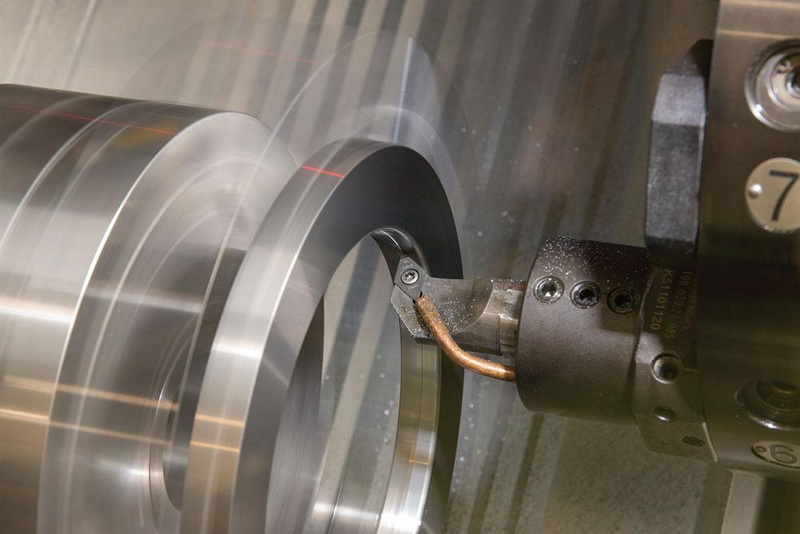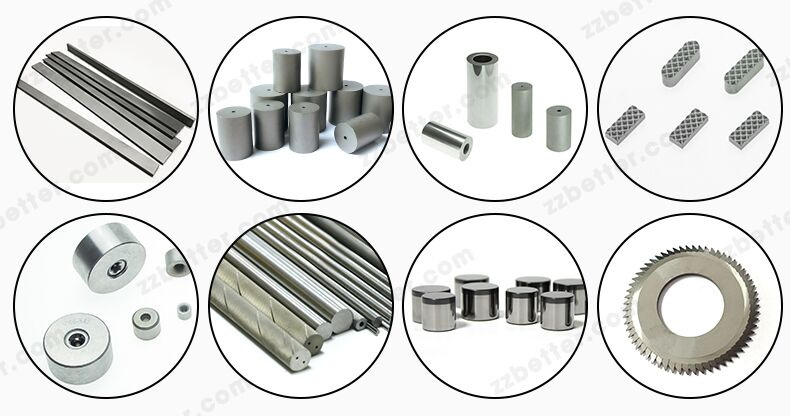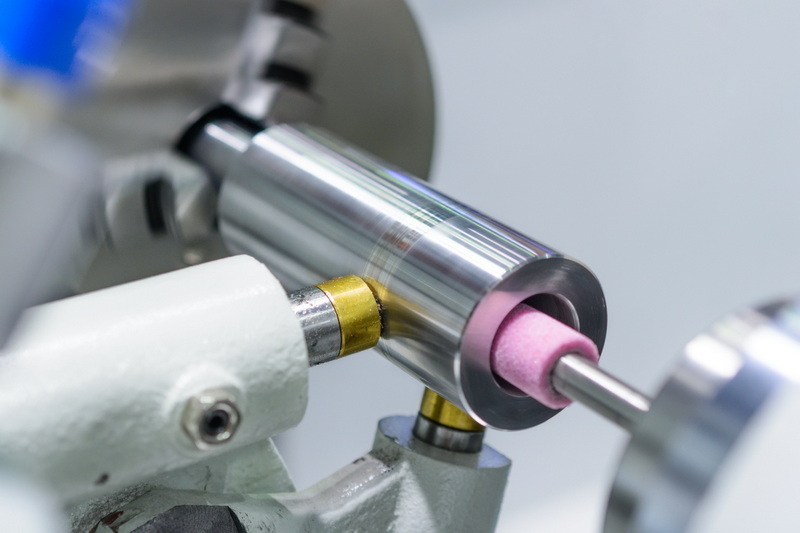Content Menu
● Introduction to Grinding Hardened Steel
>> Why Use Tungsten Carbide?
● Equipment Needed
>> Lathe Setup
● Grinding Techniques
>> Step-by-Step Grinding Process
>> Safety Precautions
● Common Challenges
>> Overcoming Challenges
● Advanced Techniques for Precision Grinding
>> 1. Using Different Grits
>> 2. Adjusting Grinding Speed
>> 3. Coolant Selection
>> 4. Tool Geometry
>> 5. Workpiece Preparation
● Conclusion
● Frequently Asked Questions
>> 1. What is the best type of tungsten carbide tool for grinding hardened steel?
>> 2. How do I prevent overheating during the grinding process?
>> 3. What safety precautions should I take when grinding hardened steel?
>> 4. How often should I replace tungsten carbide tools?
>> 5. Can I use other materials besides tungsten carbide for grinding hardened steel?
● Citations:
Grinding hardened steel on a lathe is a challenging task that requires precision and the right tools. Tungsten carbide tools are often used for this purpose due to their high hardness and wear resistance. In this article, we will explore the process of grinding hardened steel using tungsten carbide tools on a lathe, including the necessary equipment, techniques, and safety precautions.

Introduction to Grinding Hardened Steel
Hardened steel is a type of steel that has been heat-treated to achieve high hardness, making it difficult to machine. However, it is widely used in various industries due to its strength and durability. Grinding is a common method for shaping and finishing hardened steel parts, especially when precision is required.
Why Use Tungsten Carbide?
Tungsten carbide is a popular choice for grinding hardened steel because of its exceptional hardness and resistance to wear. It maintains its cutting edge even at high temperatures, making it ideal for machining hard materials.
Tungsten Carbide Properties:
- Hardness: Tungsten carbide is significantly harder than steel, allowing it to cut through hardened steel efficiently.
- Wear Resistance: It resists wear and tear, extending the tool's lifespan.
- High Temperature Resistance: Maintains its cutting efficiency even at high temperatures.
Equipment Needed
To grind hardened steel on a lathe, you will need the following equipment:
1. Lathe: A precision lathe capable of handling the size and type of material you are working with.
2. Tungsten Carbide Tools: These can be in the form of inserts or solid carbide tools.
3. Grinding Attachment: Some lathes come with a grinding attachment, or you can purchase one separately.
4. Coolant System: To prevent overheating and maintain tool life.
5. Safety Gear: Gloves, safety glasses, and a dust mask are essential for protecting yourself from debris and dust.
Lathe Setup
Ensure your lathe is properly set up for grinding. This includes installing the grinding attachment and ensuring the tool is securely held in the toolpost.
Lathe Setup Steps:
1. Install Grinding Attachment: Follow the manufacturer's instructions for mounting the grinding attachment.
2. Secure Tool: Use a tool holder designed for tungsten carbide tools to ensure proper alignment and stability.
Grinding Techniques
Grinding hardened steel requires careful technique to avoid damaging the tool or the workpiece.
Step-by-Step Grinding Process
1. Prepare the Workpiece: Ensure the hardened steel is properly mounted on the lathe and aligned.
2. Select the Right Tool: Choose a tungsten carbide tool suitable for grinding hardened steel.
3. Start Grinding: Begin with a coarse grit to remove material quickly, then switch to finer grits for finishing.
4. Maintain Coolant Flow: Keep the workpiece and tool cool to prevent overheating.
5. Monitor Progress: Regularly inspect the workpiece to ensure it meets the desired dimensions and finish.
Grinding Techniques:
- Coarse Grinding: Use a coarse grit wheel to remove material efficiently.
- Fine Grinding: Switch to a finer grit wheel for a smoother finish.
- Polishing: For a mirror finish, use a polishing compound.
Safety Precautions
Safety is crucial when grinding hardened steel. Always wear protective gear and ensure the work area is well-ventilated.
Safety Tips:
- Wear Protective Gear: Safety glasses, gloves, and a dust mask are essential.
- Ventilation: Ensure good airflow to prevent inhaling dust and fumes.
- Tool Handling: Handle tools carefully to avoid accidents.

Common Challenges
Grinding hardened steel can present several challenges, including tool wear and overheating.
Overcoming Challenges
1. Tool Wear: Regularly inspect and replace tools to maintain efficiency.
2. Overheating: Use a coolant system to keep both the tool and workpiece cool.
3. Vibration: Ensure the lathe and grinding attachment are properly aligned to minimize vibration.
Troubleshooting Tips:
- Vibration Issues: Check the alignment of the grinding attachment and ensure all parts are securely fastened.
- Overheating: Increase coolant flow or reduce grinding speed.
Advanced Techniques for Precision Grinding
For achieving high precision and smooth finishes, consider the following advanced techniques:
1. Using Different Grits
- Coarse Grit (80-120): For rapid material removal.
- Medium Grit (220-240): For semi-finish grinding.
- Fine Grit (320-400): For final finishing.
2. Adjusting Grinding Speed
- Higher Speeds: For coarse grinding to remove material quickly.
- Lower Speeds: For fine grinding to achieve a smooth finish.
3. Coolant Selection
- Water-Based Coolants: Effective for most grinding operations.
- Oil-Based Coolants: Better for high-speed grinding or when using certain types of tools.
4. Tool Geometry
- Rake Angle: A positive rake angle can improve cutting efficiency but may reduce tool life.
- Relief Angle: Ensure sufficient relief to prevent tool binding.
5. Workpiece Preparation
- Cleaning: Ensure the workpiece is free from debris and oils before grinding.
- Alignment: Properly align the workpiece to avoid uneven grinding.
Conclusion
Grinding hardened steel on a lathe using tungsten carbide tools requires precision, the right equipment, and careful technique. By following the steps outlined in this article and maintaining safety precautions, you can achieve high-quality finishes on hardened steel parts.

Frequently Asked Questions
1. What is the best type of tungsten carbide tool for grinding hardened steel?
The best type of tungsten carbide tool for grinding hardened steel depends on the specific application. Generally, tools with a high cobalt content offer better wear resistance and are suitable for grinding hard materials.
2. How do I prevent overheating during the grinding process?
Prevent overheating by using a coolant system. This can be a water-based or oil-based coolant, depending on the tool and material being machined. Regularly inspect the tool and workpiece for signs of overheating.
3. What safety precautions should I take when grinding hardened steel?
Always wear protective gear such as safety glasses, gloves, and a dust mask. Ensure the work area is well-ventilated to prevent inhaling dust and fumes.
4. How often should I replace tungsten carbide tools?
Replace tungsten carbide tools when they show significant wear or when the cutting edge becomes dull. Regular inspection is key to maintaining tool efficiency and preventing damage to the workpiece.
5. Can I use other materials besides tungsten carbide for grinding hardened steel?
While tungsten carbide is the most common choice, other materials like diamond-coated tools can also be used for grinding hardened steel. However, tungsten carbide remains the most cost-effective and efficient option for most applications.
Citations:
[1] https://www.model-engineer.co.uk/forums/topic/grinding-your-own-hss-lathe-tools-tips-tricks/
[2] http://conradhoffman.com/advancedsharp.htm
[3] https://patents.google.com/patent/CN1442257A/da
[4] https://www.hobby-machinist.com/threads/how-to-grind-a-hss-turning-tool.52581/
[5] https://littlemachineshop.com/images/gallery/instructions/grindingtoolbits.pdf
[6] https://www.csulb.edu/sites/default/files/document/2019_mini_manuscript.pdf
[7] https://www.youtube.com/watch?v=qCpIxq0kHzo
[8] https://www.istockphoto.com/photos/grinding-lathe?page=4
[9] https://patents.google.com/patent/CN1436111A/zh
[10] https://www.youtube.com/watch?v=IxZpIxryUUg
[11] https://patents.google.com/patent/CN113996812B/zh
[12] https://www.mdpi.com/2079-6412/10/8/731
















